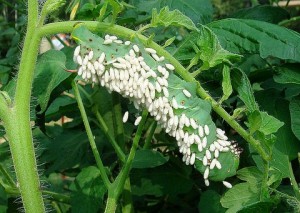 Hosts: Vincent Racaniello, Alan Dove, Rich Condit, and Gertrud Radu
Hosts: Vincent Racaniello, Alan Dove, Rich Condit, and Gertrud Radu
Gertrud joins the TWiVoners to review how dengue virus infection of mosquitoes alters blood feeding behavior, and gene therapy as practiced by parasitoid wasps.
Click the arrow above to play, or right-click to download TWiV 179 (76 MB .mp3, 105 minutes).
Subscribe (free): iTunes, RSS, email
Links for this episode:
- Renato Dulbecco, 1914-2012 (virology blog)
- William Jarrett, 83 (thanks, Lynn Enquist)
- Dengue virus infection of mosquitoes alters their behavior (PLoS Path)
- Does dengue make mosquitoes thirstier for blood? (NY Times)
- Polydnaviruses of braconid wasps (Science)
- Making nice with viruses (Science)
- Viral and wasp genes involved in symbiotic replication (J Virol)
- Amazing parasitic wasp images
- The Far Side cartoon on mosquitoes (gif)
- TWiV on Facebook
- Letters read on TWiV 179
Weekly Science Picks
Gertrud – Bat on a plane! (MMWR)
Alan – The Rings of Earth (YouTube)
Rich – Giant Magellan telescope
Vincent – Hepatitis C new drug pipeline
Listener Pick of the Week
Ricardo – Evolution: The Natural History of Animal Skeletons
Peter – Self-assembly line (YouTube)
Send your virology questions and comments to [email protected].


In your tangent on elimination of variola stocks, you mentioned that it would be possible to reconstruct the virus from the sequence data. Is that really possible? I assume Rich would have commented if it were not, but I was under the impression that it would either not be possible or very difficult. Poxvirus DNA is not infectious, so you couldn’t just transfect it and get virus replication. Early gene expression occurs within the partially disassembled virion, so the genome needs to come in with the associated enzymes and structures. I suppose someone could try transfecting variola DNA into a vaccinia infected cell, to try to get variola genomes packaged into a vaccinia particle, then on the next round of infection authentic variola virions could be made. But that hasnt been done as far as I know, and Im not sure if it would actually work.
Rich and Grant McFadden have said before on TWiV that it is technically possible to reconstruct smallpox virus from the sequence. We’ve even discussed how to do it, using a related helper virus they seemed to think it would work. How long that would take is something else. Even in the best lab it could take a long time – or not. It depends on a lot of variables, including the ‘hands’ of the scientist doing the work. Without a great lab and great hands, I doubt it.
Hmmm… in my opinion it is theoretically possible, but you never know what kinds of logistical problems you run into when you actually set about doing it. My grad school project COULD technically have been completed in 2 years, but there were all kinds of unforeseen issues with cloning, expression and other parameters. Let’s not forget also, that there may be all kinds of strains in Novosibirsk and Atlanta freezers (and maybe others?), for which we don’t have an actual sequence.